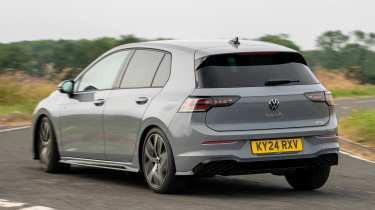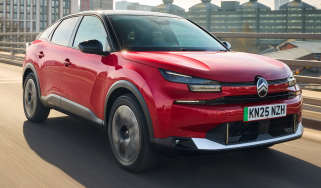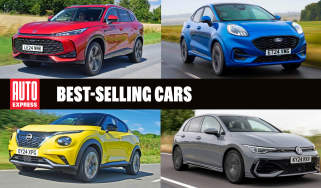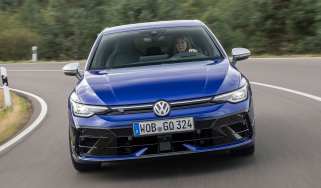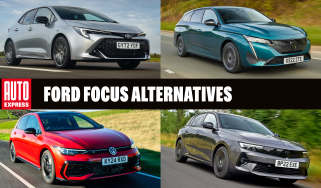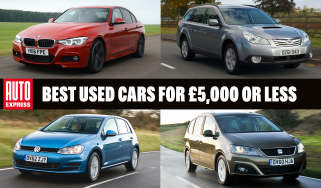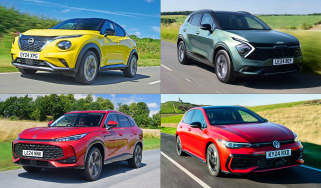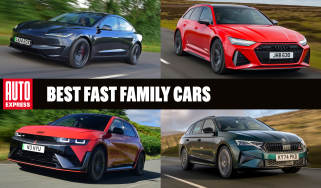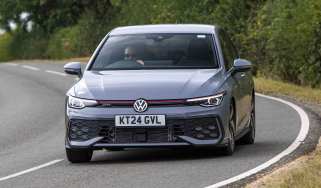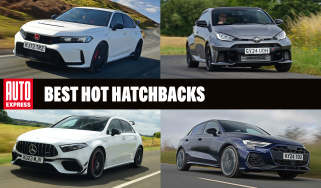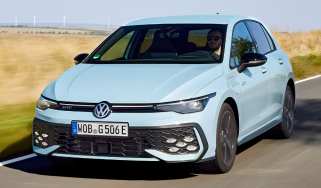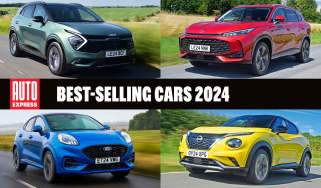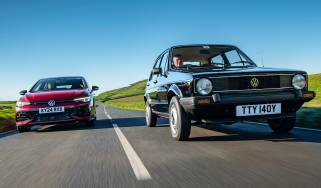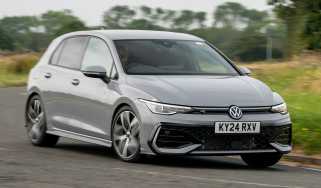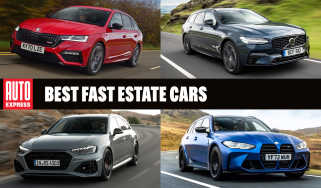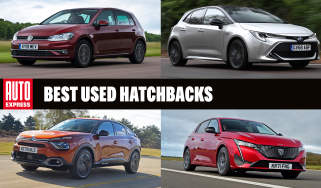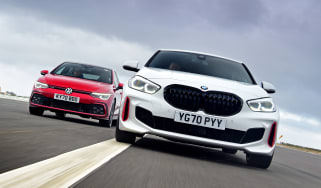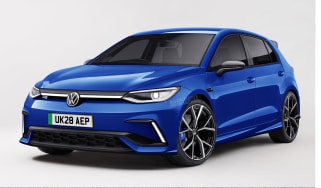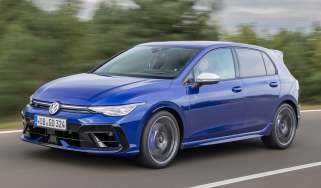Volkswagen Golf review
The Mk8 Golf offers cleaner engines, an updated interior and the latest on-board tech, but it can’t quite reach the top of the class

Is the Volkswagen Golf a good car?
The eighth-generation Volkswagen Golf scored well in plenty of areas when it was first launched in 2020, but some shortcomings meant it wasn’t quite as convincing as previous generations. VW’s family car motoring icon has long reigned supreme, combining classy looks and practicality while also being good to drive, but some of the decisions made about the car’s ergonomics meant it wasn’t quite as user-friendly as the VW Golf Mk7. However, the facelifted VW Golf Mk8.5 aims to address most of these quibbles, and the car remains a comfortable and pleasant place to be for the most part. The ride quality is still rather compromised, though, particularly over poorer surfaces, and there’s intrusive road noise at speed, especially on larger diameter wheels.
When you buy a Volkswagen Golf, you expect quality throughout, but the Mk8 model doesn’t feel head-and-shoulders above its rivals, even in its updated guise. The focus on technology was far from perfect at launch, but this is where the Golf Mk8.5 has made the most progress, with more intuitive touchscreen controls and improved ergonomics. However, compared with the competition, the VW Golf isn’t the class benchmark it once was.
|
Key specs | |
|
Fuel type |
Petrol, diesel, PHEV |
|
Body style |
Five-door hatchback |
|
Powertrain |
1.5-litre 4cyl turbocharged petrol, front-wheel drive |
|
Safety |
5-star Euro NCAP (2022) |
|
Warranty |
3yrs/60,000 miles |
How much does the Volkswagen Golf cost?
The Golf name is second only to the Beetle in the history of Volkswagen. The Golf celebrated its 50th birthday in 2024, and in the five decades it has been in production, more than 37 million Golfs have been sold. The hatchback’s biggest strength has traditionally been its few weaknesses; that all-round ability, plus the lure of a German badge, has made it irresistible to buyers for decades.
Used - available now
Over time, Volkswagen has adopted the ‘if it ain't broke, don’t fix it’ approach for the Golf. Evolutionary styling updates, an increasingly high-quality feel to the cabin, and a succession of capable engines have secured millions of customers, and the German manufacturer has broadly followed this strategy with the eighth-generation model.
Under the skin, the Golf Mk8 is based on the Mk7’s MQB Evo platform, which is used across various VW Group cars, including the SEAT Leon and Skoda Octavia - direct rivals in the family hatchback class. The Mk8.5 Volkswagen Golf is available in five-door hatchback and estate body styles (the three-door hatch was dropped with the Golf Mk7).
Volkswagen’s trim structure for the Golf is almost bewilderingly large. At the entry point sits the Life trim, above which are Match, Style, R-Line and Black Edition variants, plus the sportier GTE, GTI, GTI Clubsport, R and R Black Edition.
Entry-level Life trim offers a generous amount of kit and tech, including a digital instrument display, wireless smartphone charging and a 13-inch colour touchscreen. The latter is standard on every model and means that the climate controls are now permanently displayed across the bottom of the screen. The Match is the best value; it’s the same as Life trim, but adds a reversing camera, keyless entry, bigger wheels and tinted glass for less than £200 extra.
The Style model should prove to be popular, adding items such as larger 17-inch alloy wheels and sports seats with upgraded upholstery, while the dynamic R-Line spec includes lowered, stiffer suspension and an exterior styling pack giving a more muscular stance. The Black Edition is around £1,000 more than an R-Line and adds larger wheels, matrix LED headlights, heated front seats and more.
One of the main updates for the VW Golf Mk8.5 is with the engine line-up. The 109bhp 1.0-litre has been replaced by a low-output version of the 1.5-litre unit used elsewhere in the range, and is available with either 114bhp or 148bhp. Both versions come with a six-speed manual transmission, while adding the slick seven-speed DSG automatic gearbox to the latter introduces VW’s eTSI mild-hybrid system.
The more powerful GTI delivers 261bhp from its 2.0-litre TSI petrol engine, while the Volkswagen Golf GTI Clubsport and R models offer 296bhp and 328bhp, respectively. All of these models come with a standard DSG twin-clutch auto, while the R is also equipped with 4MOTION four-wheel drive.
For those prioritising fuel economy, the updated Mk8 Golf is still available with a 2.0-litre diesel engine with 113bhp or 148bhp, the latter being auto only. Buyers can also opt for the 268bhp GTE petrol plug-in hybrid or the 201bhp eHybrid, which both now come with a 1.5-litre engine to replace the older 1.4 TSI unit. They offer exceptional fuel economy and low CO2 emissions, while a larger 19.7kWh drive battery means they can travel further in zero-emissions all-electric mode.
Many of the Golf’s immediate competitors are offered with the option of pure-electric power (like the Vauxhall Astra Electric and Peugeot E-308), but if you want a Volkswagen-badged Golf-sized EV, then you’ll have to look at the Volkswagen ID.3.
Volkswagen continues to charge premium prices for what it considers to be the class-leading family hatchback currently on sale. Entry-level cars start from more than £27,000, and the range tops out at around £43,000 for the Golf R.
Engines, performance & drive
There is a wide range of engines available in the Volkswagen Golf that cover all bases. Most versions come with a DSG twin-clutch gearbox, with only the base models featuring manual control. As ever, the Golf strikes a fair balance between comfort and performance, with a well-judged ride that can smooth out rough surfaces (although bigger wheels will tend to negate this), and enough body control so that the Golf will be enjoyable in corners. Read more about the Volkswagen Golf's engines, performance and drive…
MPG, emissions & running costs
For ultimate efficiency, the eHybrid and GTE models are the best performers in the revised Golf line-up. A larger battery means that they can travel even further on electric power alone, while low emissions are to the benefit of company car tax. Elsewhere, there’s mild-hybrid tech for the petrol auto, but manual cars and diesels only come with stop-start. The high-performance models can be surprisingly efficient when taking things easy, too. Read more about the Volkswagen Golf’s MPG, emissions and running costs...
Interior, design & technology
When the VW Golf Mk8 was launched, there was criticism of the car’s on-board technology, because some basic ergonomic flaws were introduced when compared with the outgoing Mk7. These flaws have now largely been rectified, with the touch-sensitive controls on the multifunction steering wheel replaced by push buttons, while the temperature and volume sliders beneath the touchscreen are now illuminated, as they should have been from launch. Read more about the Volkswagen Golf’s interior, design and technology...
Boot space, comfort & practicality
As is typical with a mid-life update, the Volkswagen Golf Mk8 doesn’t gain any additional space with the upgrade to Mk8.5 specification, but then it was a pretty comfortable and usable five-door hatchback in the first place. There’s plenty of room for four inside, while the up to 381-litre boot isn’t the biggest in the compact hatchback sector, but is competitive. Read more about the Volkswagen Golf’s boot space, comfort and practicality...
Reliability & safety
Volkswagen’s reputation for building reliable and dependable cars was largely gained by the first-generation Beetle and earlier examples of Golf. However, according to respondents to the Driver Power ownership survey, VW might be trading on its past achievements in that regard, and there’s room for improvement. Read more about the Volkswagen Golf’s reliability and safety...
Volkswagen Golf alternatives
As mentioned above, the VW Golf faces competition not only from rival manufacturers, but also from the SEAT Leon and Skoda Octavia within its own stable. Other challengers include the Kia Ceed, Hyundai i30, Ford Focus, Honda Civic, Peugeot 308, and Vauxhall Astra, while for those looking towards the premium end of the market, there’s the Audi A3 Sportback (another car based upon the Golf platform), Mercedes A-Class and BMW 1 Series.
Anyone interested in a hybrid car but doesn’t fancy plugging in should consider either the excellent Honda Civic, or the frugal Toyota Corolla.
Used and nearly new
The iconic Golf hatchback has offered a near-perfect blend of style, driving fun and practicality for over 50 years. You'll struggle to find a classier used buy, with the Golf Mk5 providing a much-needed return to form as a great driver's car in GTI trim, and later Golf Mk7 models offering improved on-board tech and a range of efficient engines. There is plenty of choice when it comes to power options, with an array of petrol, diesel and hybrid units available, although be sure to check the usual service history details, particularly on older-gen cars, as time is catching up and you may find bills more expensive.
Volkswagen Golf history
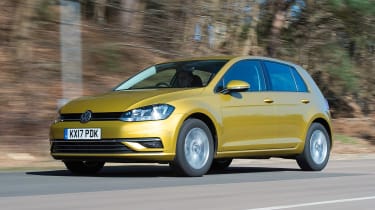
Volkswagen Golf Mk7: 2013-2019
The Mk7 Volkswagen Golf brought together all of the German manufacturer's technical know-how in what is, arguably, the best overall package in the iconic hatch's history. Already undeniably classy and good to drive, the model received a Mk7.5 facelift in 2017, introducing styling tweaks and useful new onboard technology. Read our full Mk7 Volkswagen Golf buyer’s guide here…
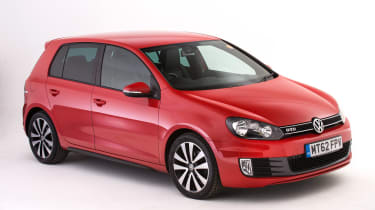
Volkswagen Golf Mk6: 2009-2013
The Mk6 Golf is based on the same platform as its predecessor, although Volkswagen raised the interior quality over the Mk5 car. The cabin included plenty of soft-touch materials and comfortable seats, while it had a quiet, executive air out on the road. Prices remain strong, even after a number of years post-production, so you'll need to spend some time finding the best bang for your buck. Read our full Mk6 Volkswagen Golf buyer’s guide here…
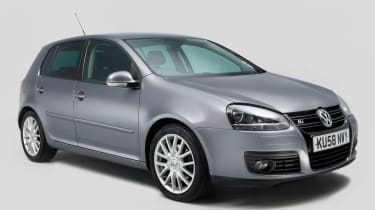
Volkswagen Golf Mk5: 2003-2009
Keen drivers often speak about the Mk5 Golf GTI as being one of the best hot hatches Volkswagen produced. More mainstream models were also highly praised for their solid build quality, while strong engines and the extra practicality of the high-roofed Volkswagen Golf Plus and roomier estate models meant the Golf's appeal reached out to a variety of buyers. Read our full Mk5 Volkswagen Golf buyer’s guide here…
Older VW Golf models
Buyers on the hunt for fourth-generation or earlier examples of Volkswagen Golf will probably be best served by scouring specialists or even the classified ads.
VW launched the Mk1 Golf in 1974, followed by the slightly bigger Golf Mk2 nine years later. The Mk3 arrived in 1991, growing in size again, and was named European Car of the Year in 1992, while the Mk4 Golf went on to be the best-selling car in Europe. Older Golf models are still popular with enthusiasts, which means there are still decent, well-cared for examples to be found, but remember to still take extra care when looking to buy.
Frequently Asked Questions
For some buyers there’s an element of buying a Golf because it’s a Golf. There’s nothing wrong with that, because it’s still a decent hatchback, but it doesn’t excel in any particular area these days.





